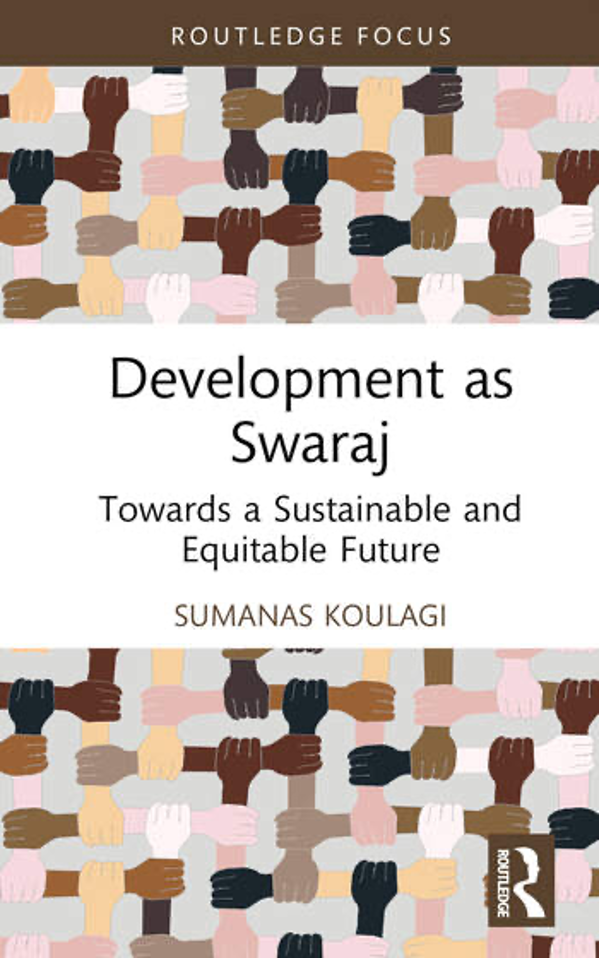
By Sumanas Koulagi
Routledge, 2023
159 pages, hardcover, $59.95
This slim and well-referenced book offers a compelling description of what a truly sustainable community looks like. Author Sumanas Koulagi (full disclosure: I’m a personal acquaintance) examines an old concept called “swaraj” to define and then demonstrate how a community can practice self-sufficiency. This vison can apply to food production as easily as it does to manufacturing clothing or any other resource to meet a basic need.
The word “sustainable” is used often as an aspirational term for everything from agriculture to economic models to energy systems, but often — as can be the case with the term “organic” — the definition for each use of the word varies widely and is rarely mapped out. Mohandas Ghandhi, in his fight for the independence of the Indian people, defined self-rule for his followers simply by spinning thread from Indian cotton that he later wove into his own clothing. This act, called “khadi,” which he performed at independence rallies as well as in jail, short-circuited the modern industrial ideology that sent raw materials from India to Britain to be processed and then sold back to India and the rest of its empire. Calling for Indians to produce for Indians was central to the movement rejecting colonial rule.
After a rigorous definition of what Koulagi calls a Swaraj Development Vision (SDV) and an examination of the ideal of sustainability, he uses khadi as an example of how systems that begin as sustainable models can be corrupted as well as how they can be perfected. He points out that self-sufficiency and efficiency have always been incompatible. He believes individuals and communities should strive to balance creativity — which he labels a fundamental human right — with “drudgery” or work, which is an obligation of every individual within a community. Too much drudgery deprives the individual of their creative right, while unending creative endeavors shift that individual’s share of drudgery to others unfairly.
Labor in the SDV becomes the ideal means of exchange (primarily in the form of barter), including for taxation whenever possible. It’s also important that production, consumption and disposal should all take place within as short a distance as possible, visible to the entire community who share the impact.
The book continues with an assessment of modern khadi production in India, which has become more symbolic than a way of empowering individuals and communities, rife with inequities and corruption at many levels. Koulagi also describes examples where khadi production has lifted individuals and communities out of poverty simply by providing for themselves as Ghandhi had always envisioned. In this way the SDV can move from an ideal to a working model that, while not perfect, definitively allows communities to sustain themselves.
This is a hopeful book that pushes squarely against the global economic model, one small community at a time. In doing so Koulagi prescribes a simple non-violent vision of people working together to fulfill their own needs along with their neighbors.
Eric Rector, Monroe, Maine
